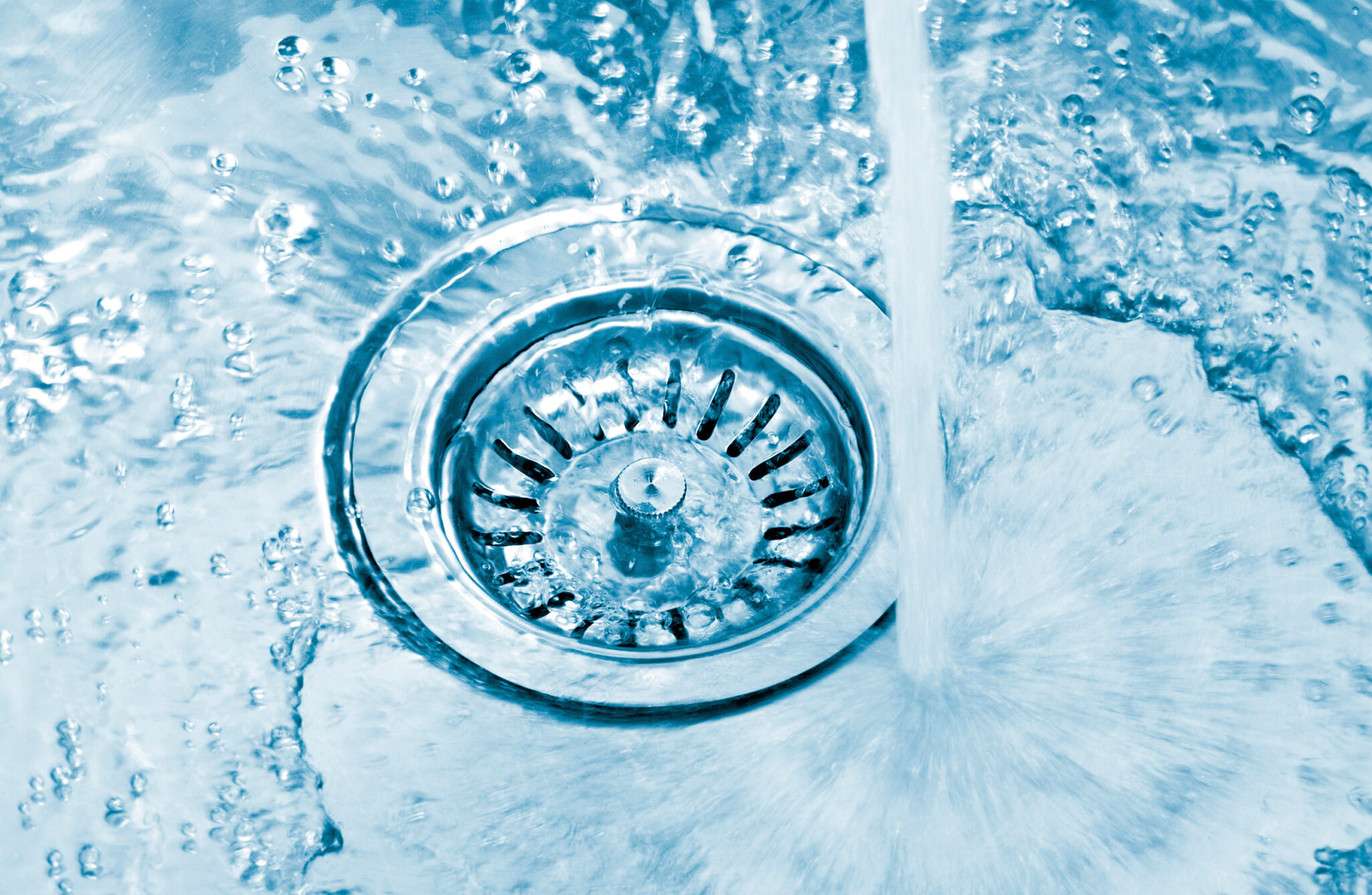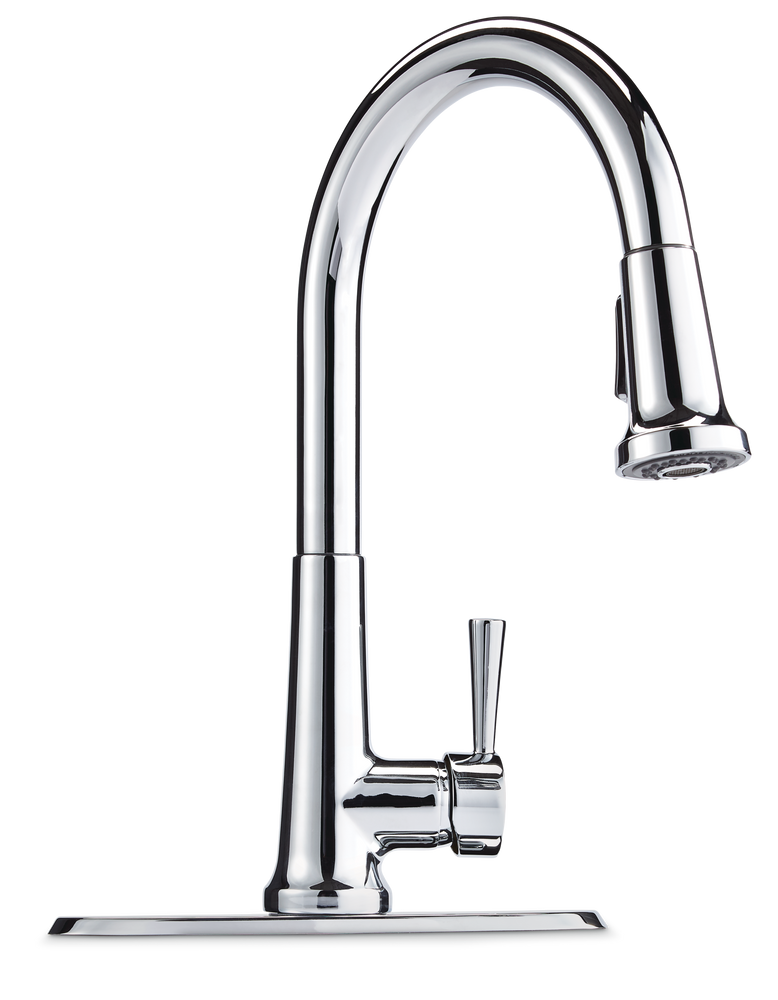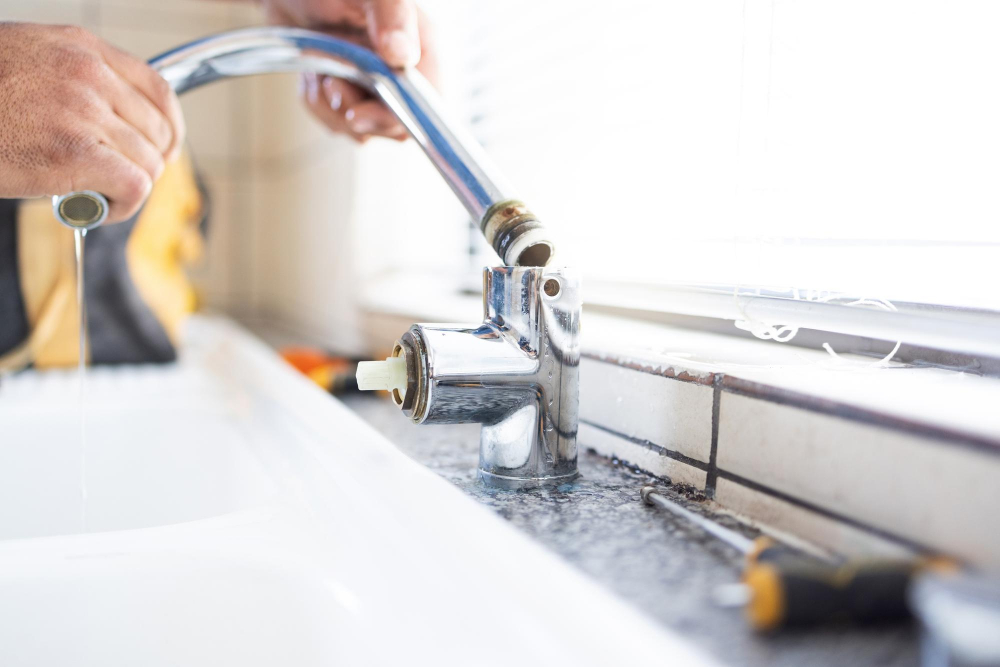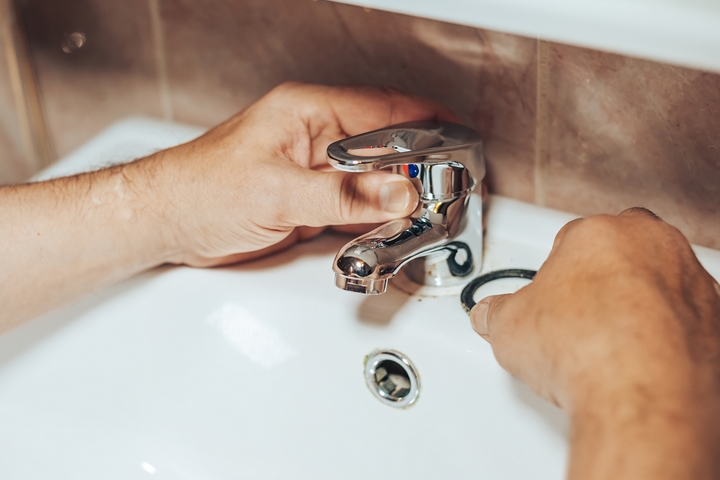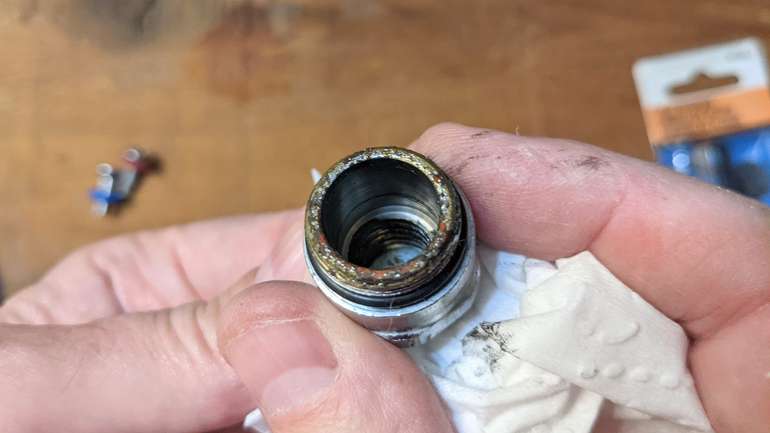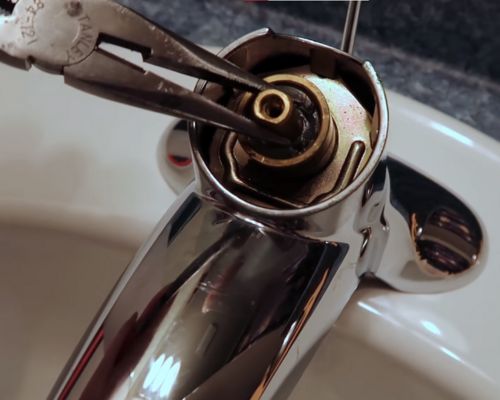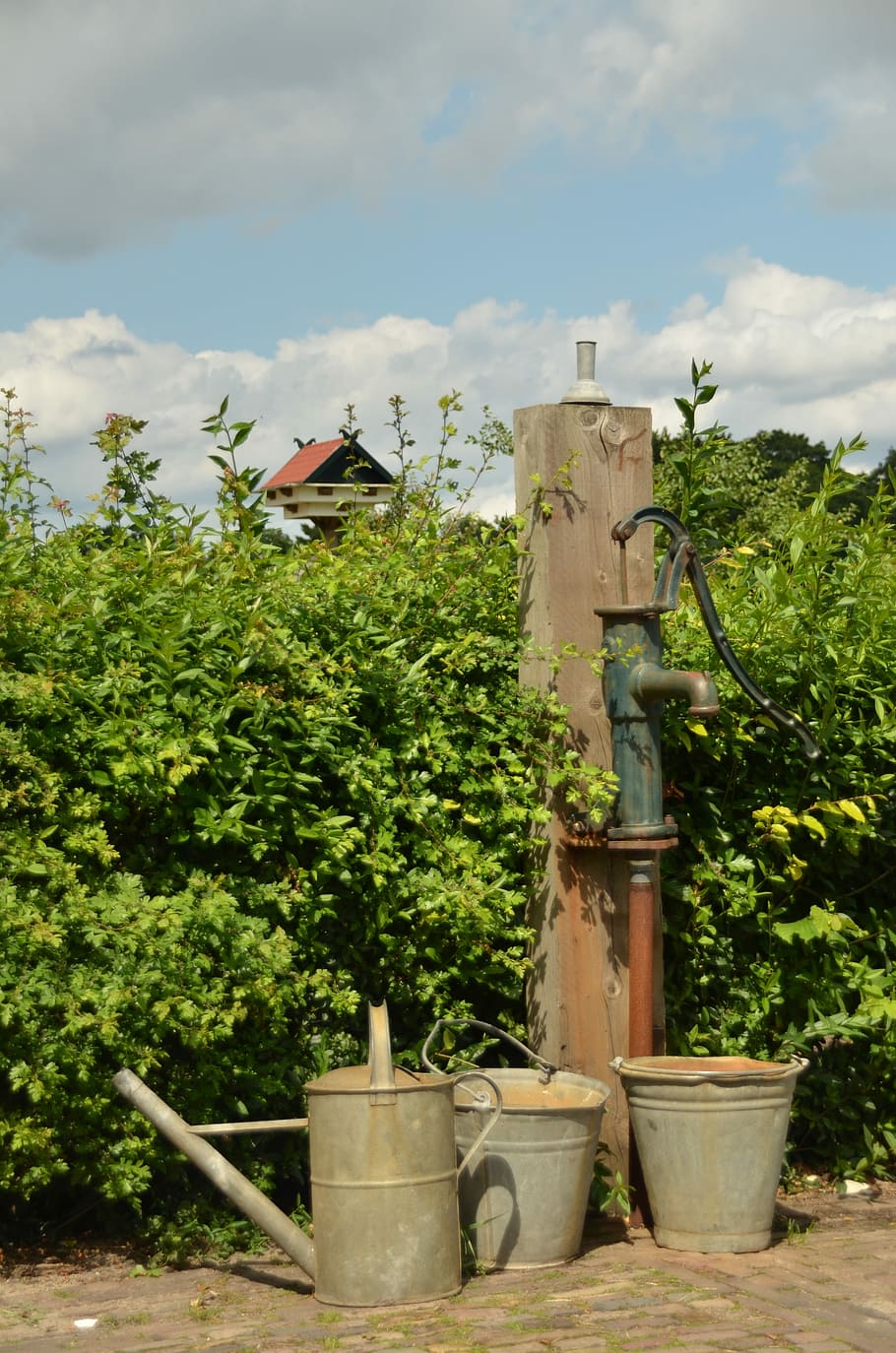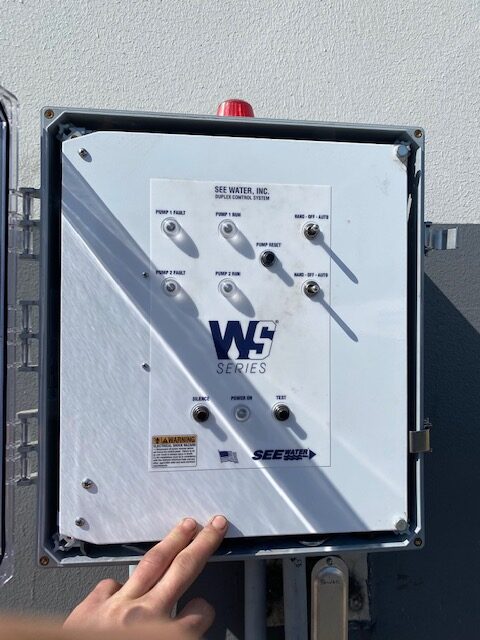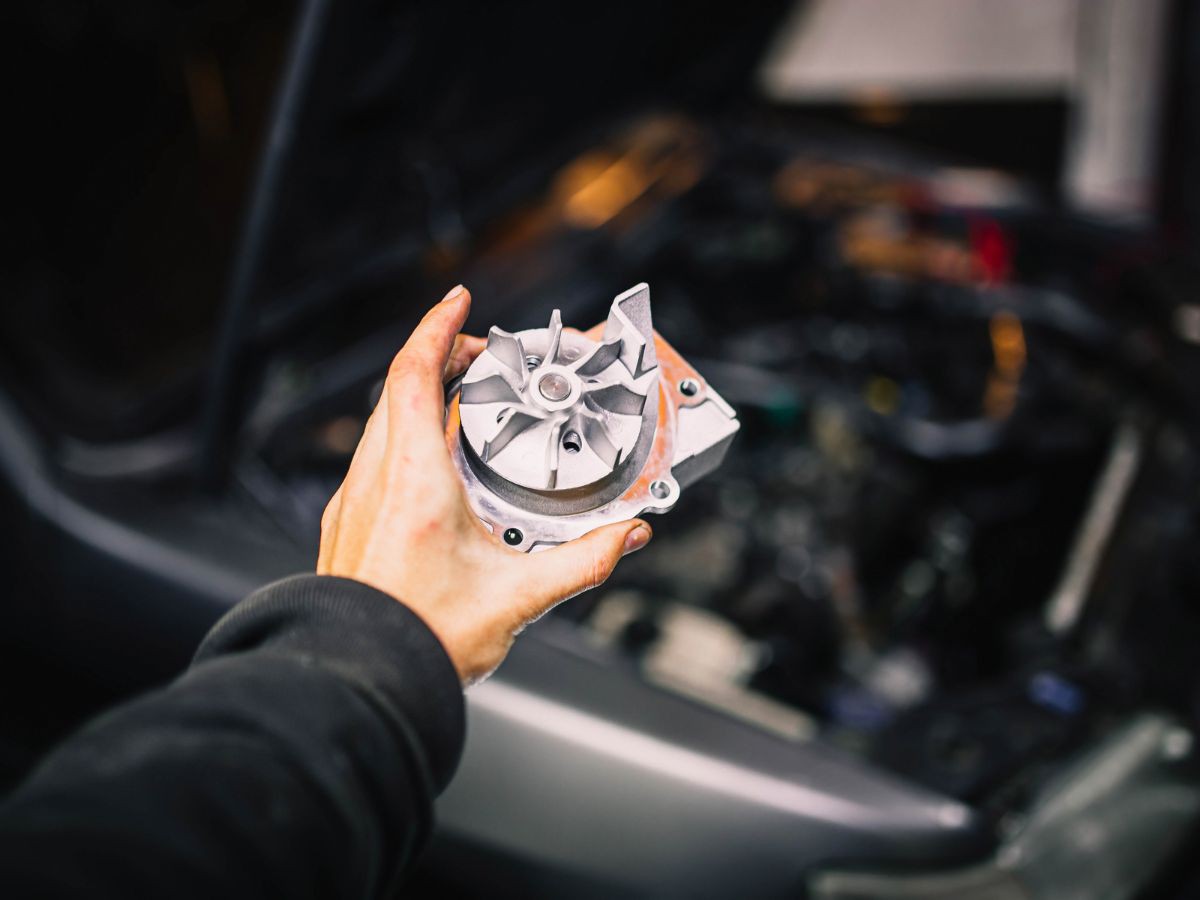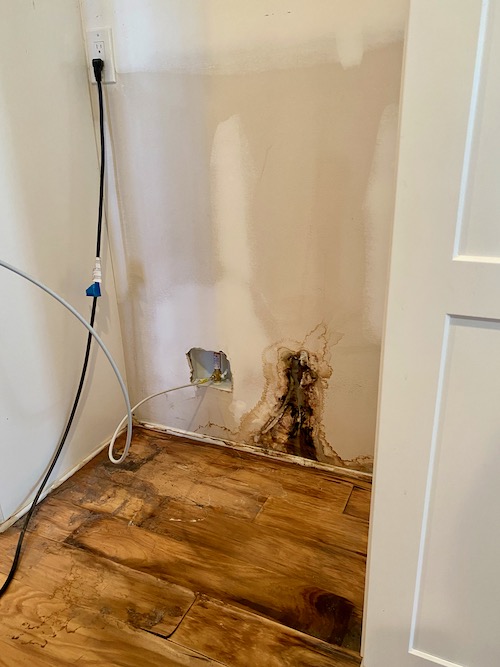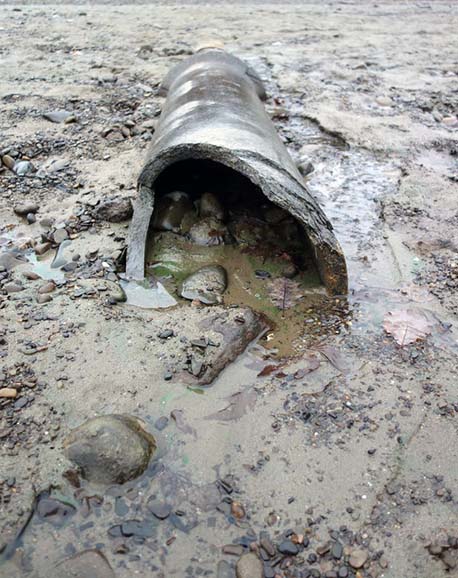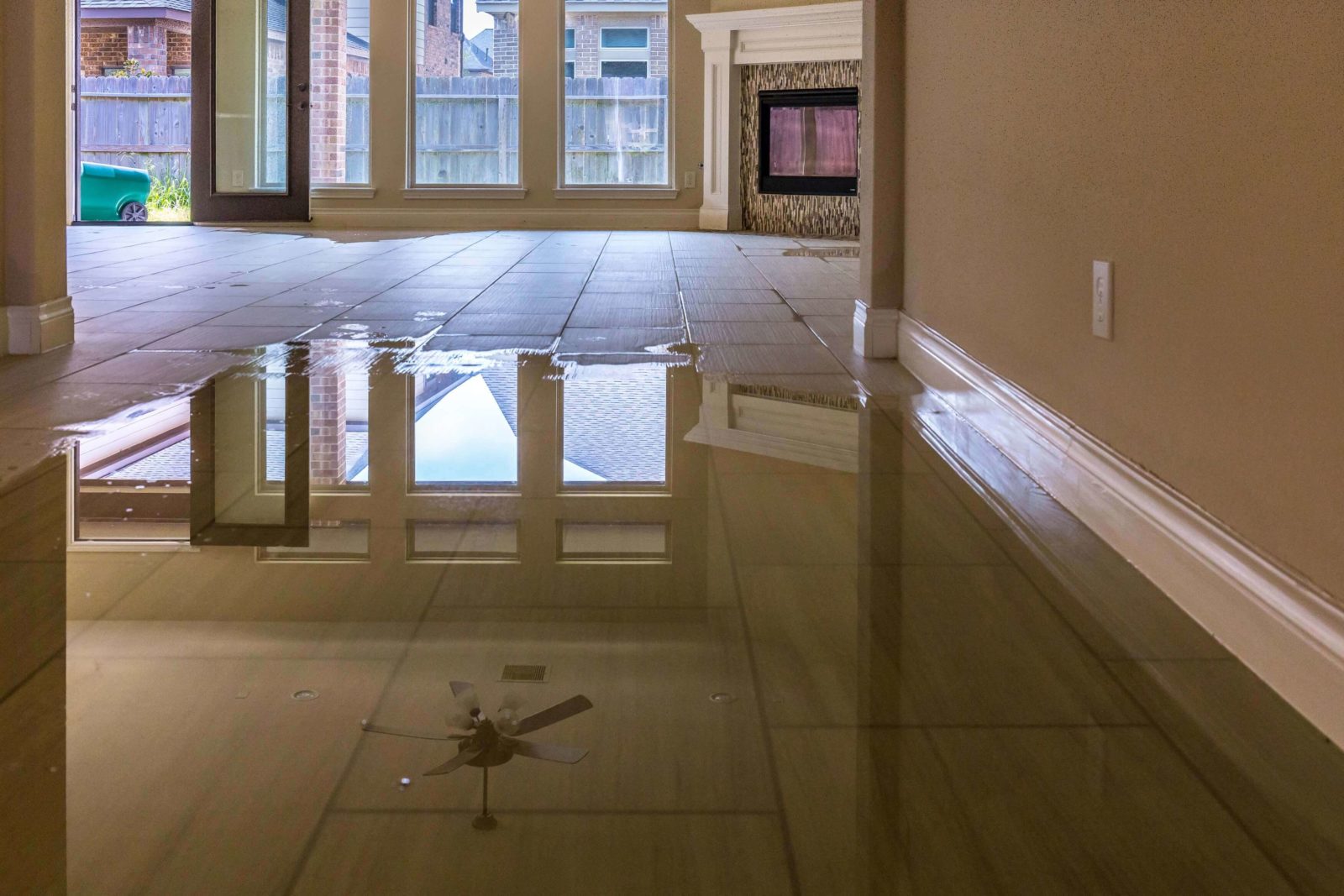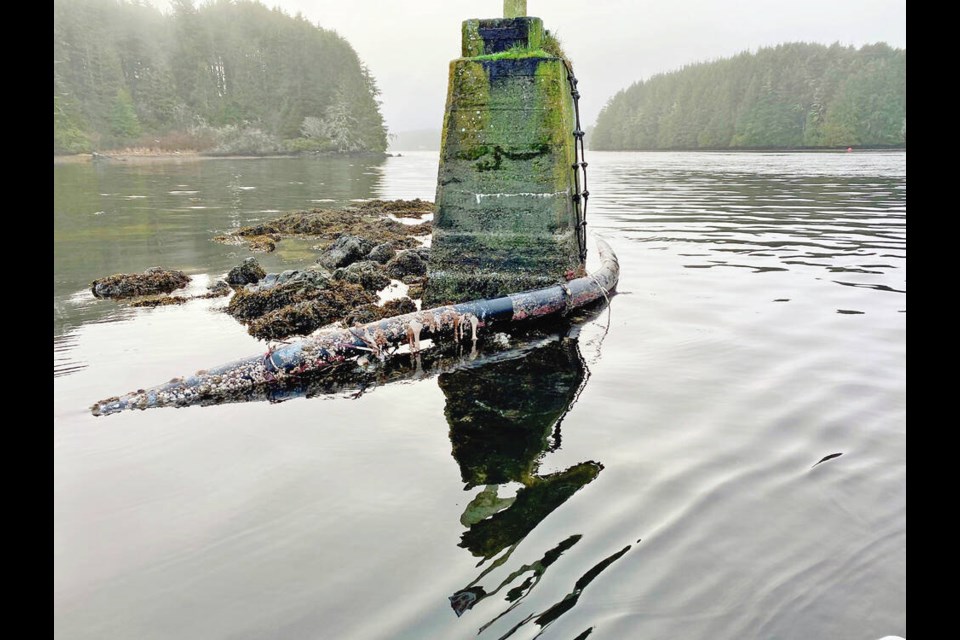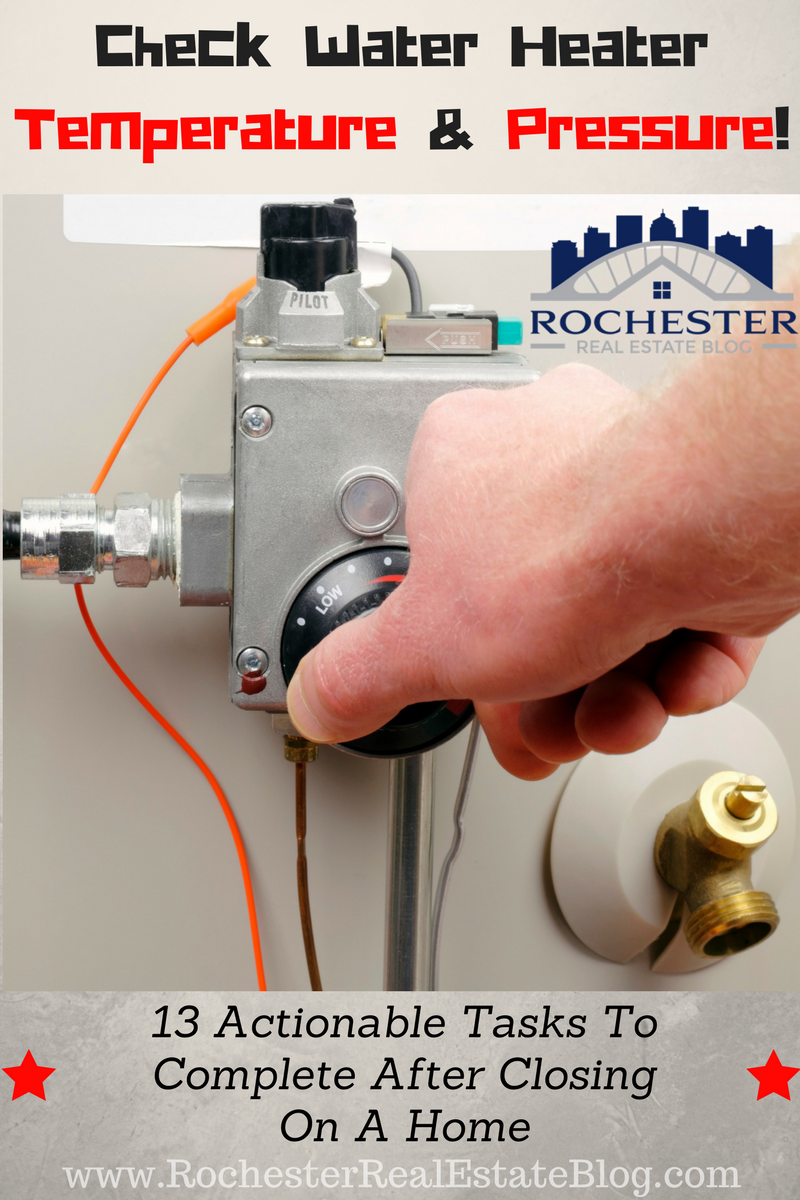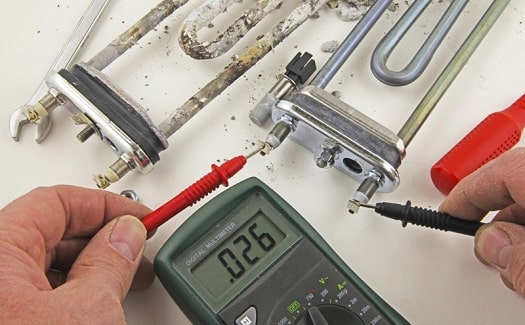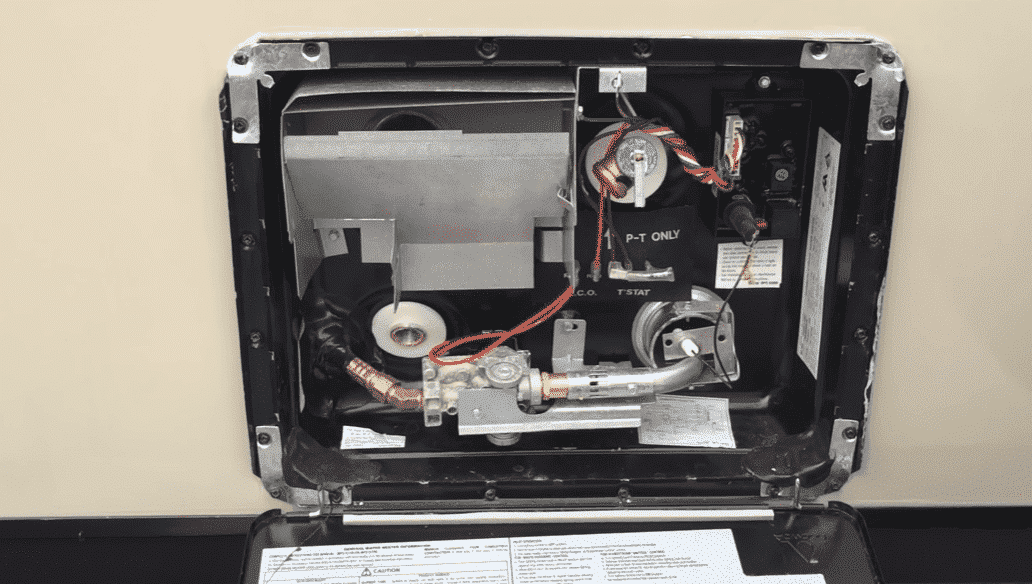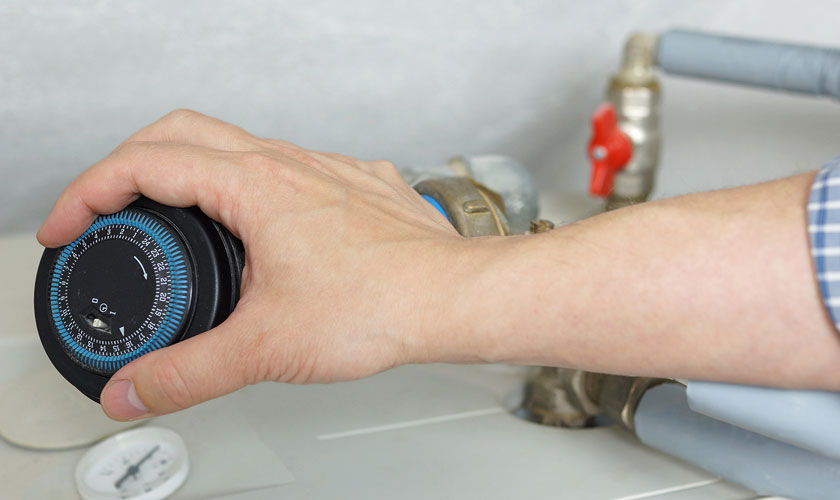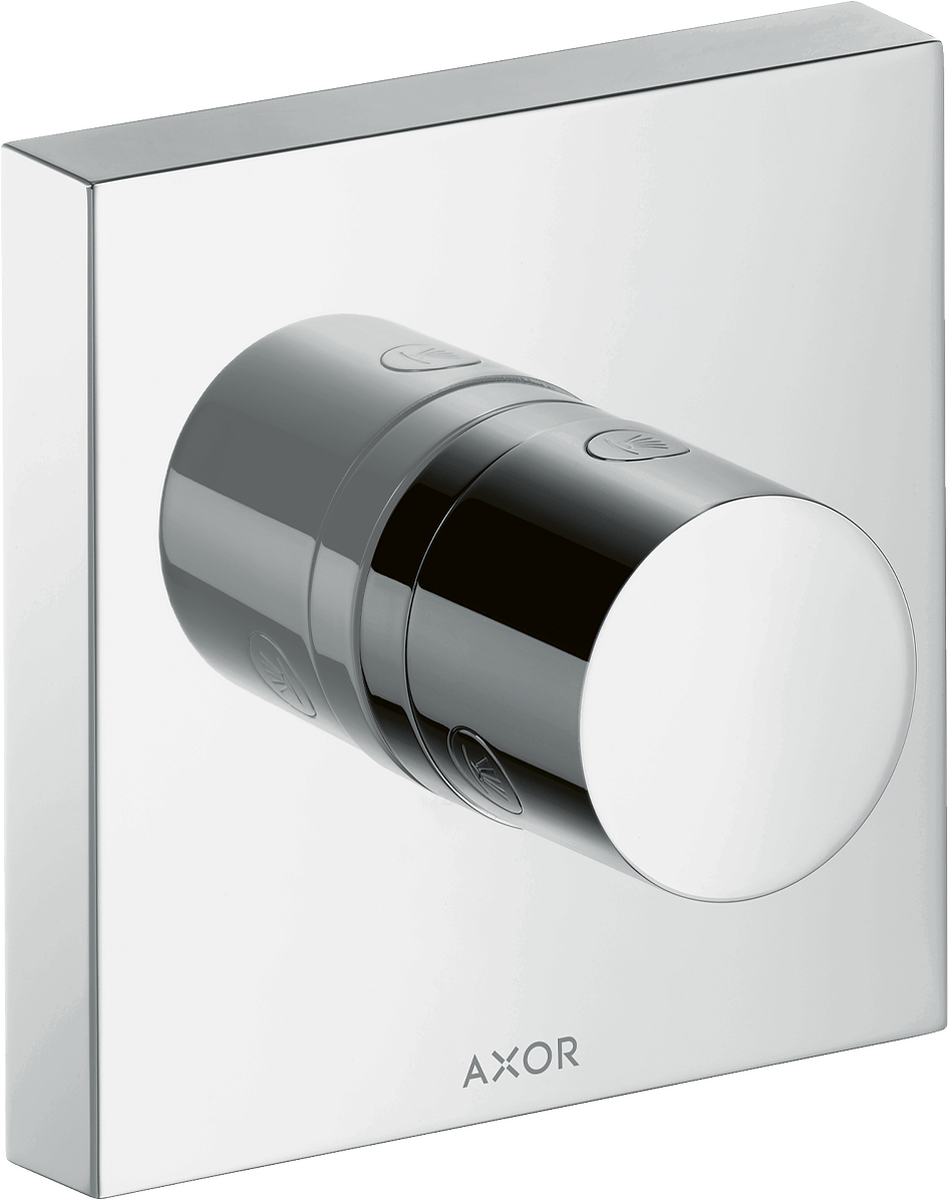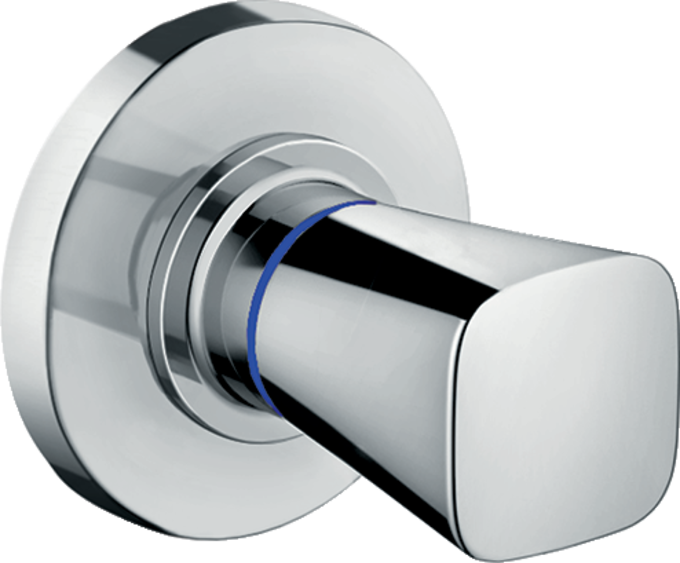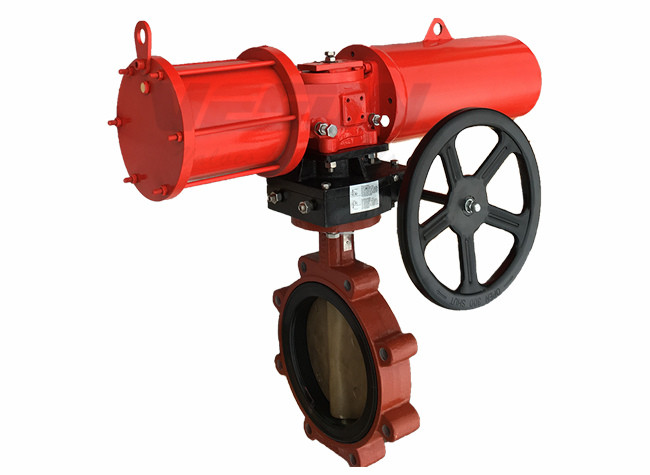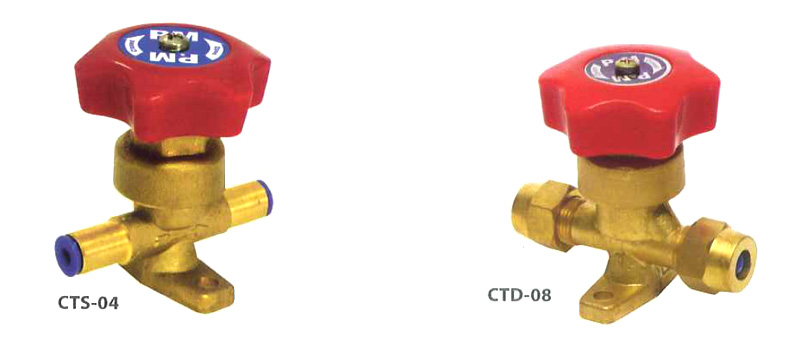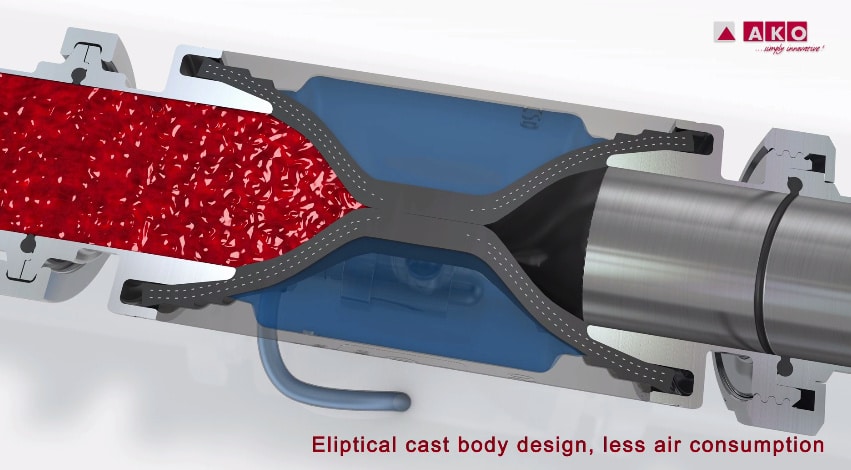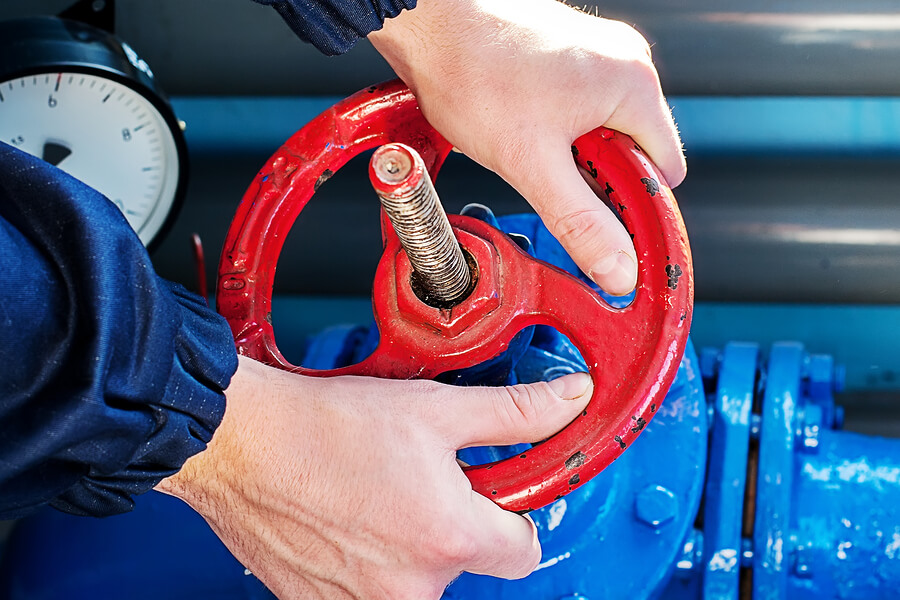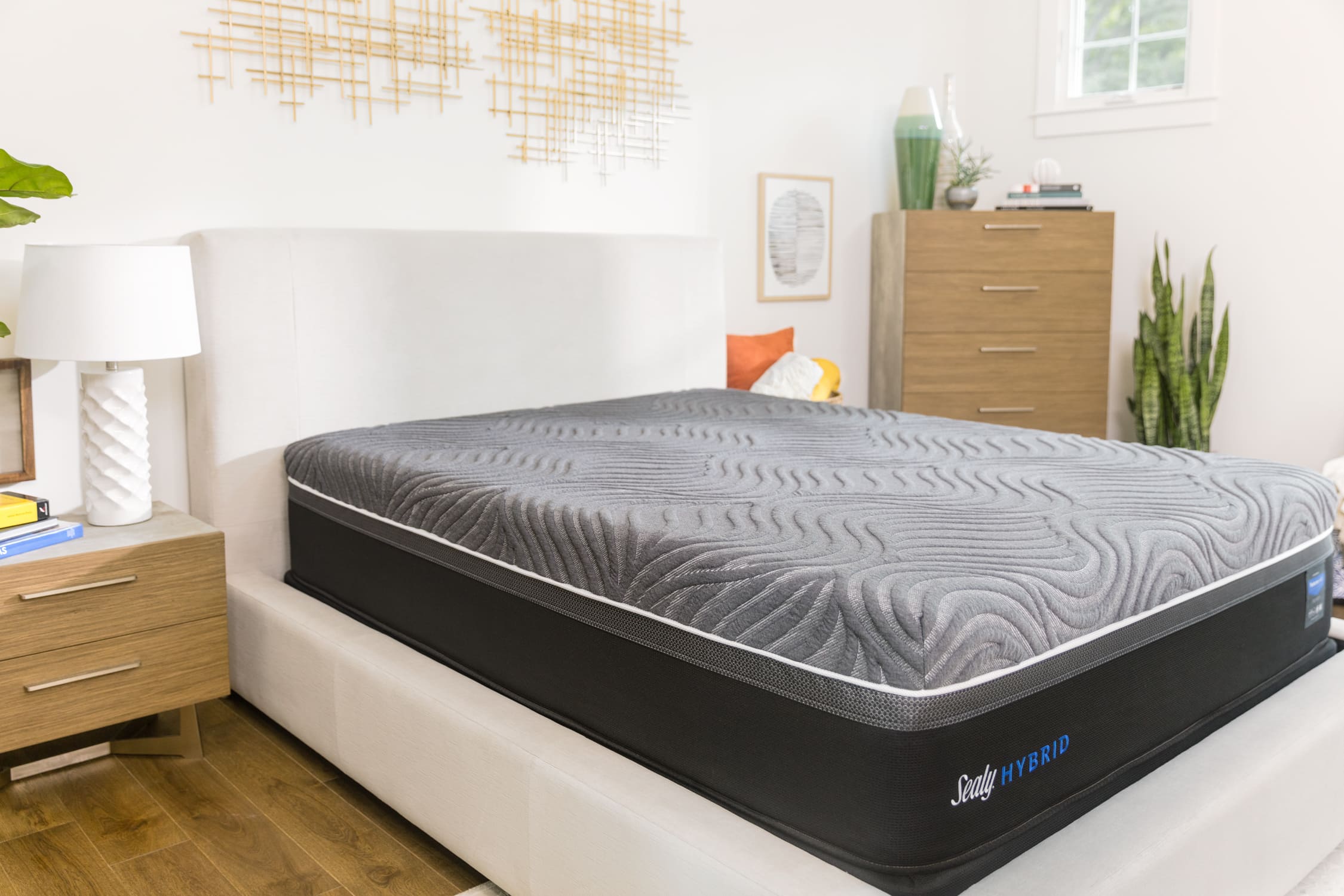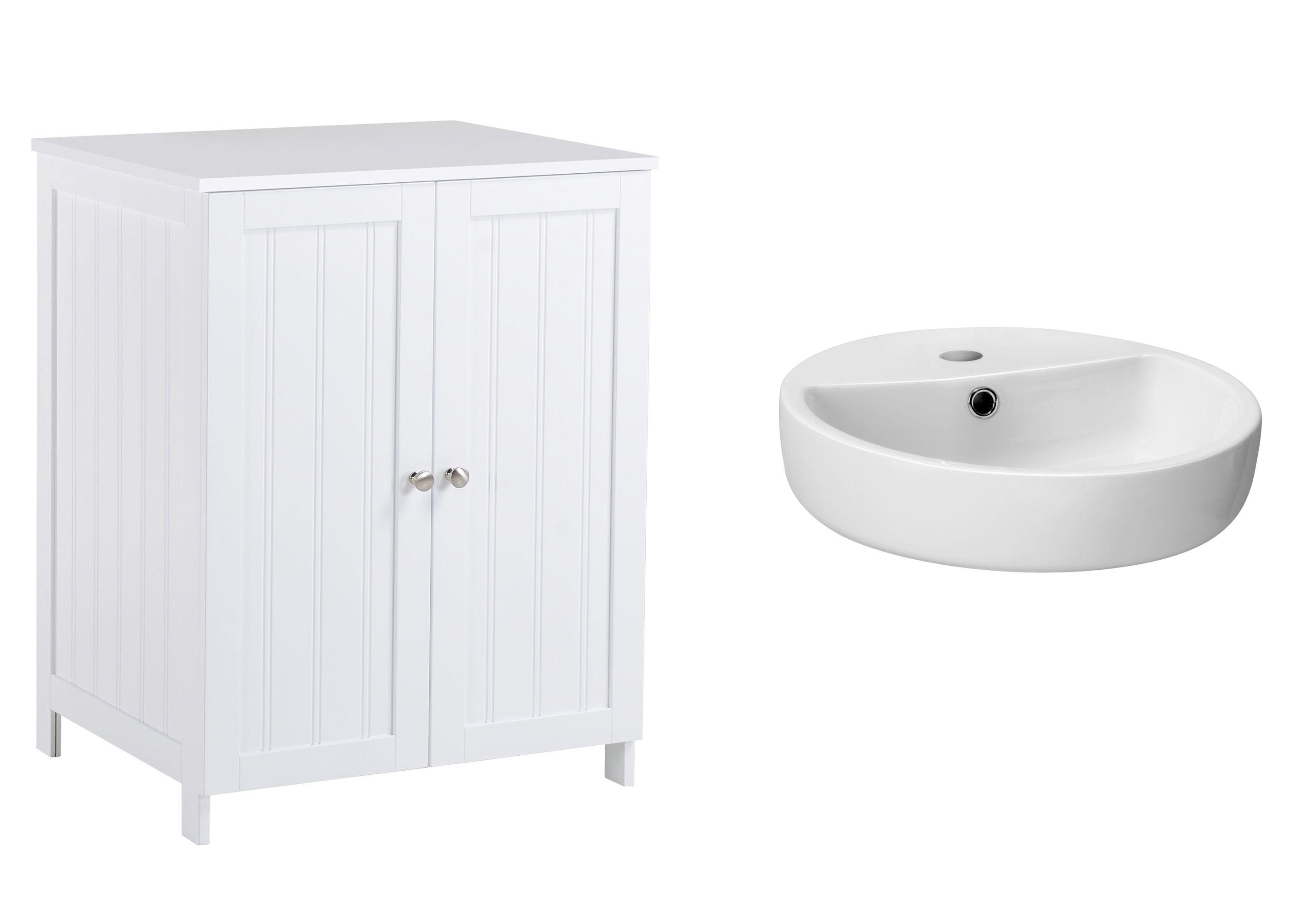If you turn on your kitchen sink and no water comes out, the first thing you should check is the water supply valve. This valve controls the flow of water into your home and can easily get turned off or accidentally shut off. Look for the valve under your sink and make sure it is fully open. If it is already open, try turning it off and on again to see if that fixes the issue.Check the Water Supply Valve
The faucet aerator is a small mesh screen located at the end of your faucet. It helps to mix air with the water, creating a smoother flow. Over time, the aerator can become clogged with mineral deposits or debris, causing low water pressure or no water at all. Remove the aerator and clean it thoroughly with a mixture of water and vinegar. If the issue persists, the aerator may need to be replaced.Inspect the Faucet Aerator
If you have low water pressure or no water at all, there may be a clog in the pipes leading to your kitchen sink. This can be caused by a buildup of debris, food particles, or mineral deposits. You can try using a plunger or a plumbing snake to clear the clog. If the clog is deeper in the pipes, you may need to call a professional plumber to help.Check for Clogged Pipes
If you notice a sudden decrease or stop in water flow, there may be a broken or disconnected pipe. Inspect the pipes under your sink for any visible damage or leaks. If you find a broken or disconnected pipe, it will need to be repaired or replaced by a professional plumber.Look for a Broken or Disconnected Pipe
Low water pressure can be caused by a variety of factors, including issues with the municipal water supply or a faulty water pressure regulator. You can check the water pressure in your home by using a pressure gauge. If the pressure is lower than normal, you may need to contact your water provider or a plumber to address the issue.Check the Water Pressure
The faucet cartridge controls the flow of water in your faucet and can become worn or damaged over time. If the cartridge is damaged, it can cause low water pressure or no water at all. You may need to replace the cartridge to fix the issue. Refer to your faucet's manual or contact the manufacturer for instructions on how to replace the cartridge.Inspect the Faucet Cartridge
If you have a well for your water supply, you may have a faulty water pump. This can cause low water pressure or no water at all. Check the pump for any visible damage or leaks. If you suspect the pump is faulty, it will need to be repaired or replaced by a professional.Check for a Faulty Water Pump
If you have recently had construction or landscaping work done near your home, it is possible that a water line leading to your kitchen sink has been damaged. This can cause a decrease or stop in water flow. If you suspect this is the case, you will need to contact a professional plumber to repair the damaged water line.Look for a Damaged Water Line
If you have no hot water coming out of your kitchen sink, the issue may be with your water heater. If the water heater is not functioning properly, it may not be heating the water to the correct temperature. Check the settings on your water heater and make sure it is turned on and set to the appropriate temperature. If the issue persists, you may need to contact a professional plumber to inspect and repair the water heater.Check the Water Heater
If you have recently had any plumbing work done in your home, it is possible that the shut-off valve for your kitchen sink was accidentally turned off and never turned back on. Check the valve located under your sink to make sure it is fully open. If it is closed, turn it on and see if that fixes the issue. In conclusion, there are several potential reasons why water may not be coming out of your kitchen sink. By checking these 10 main factors, you can narrow down the issue and potentially fix it yourself. However, if the problem persists, it is always best to consult a professional plumber for proper diagnosis and repair.Inspect the Shut-Off Valve
Reasons for Low Water Pressure in the Kitchen Sink
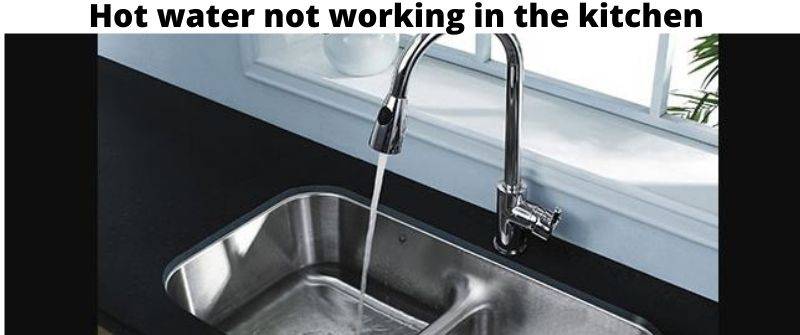
Possible Causes
 There are several reasons why
water may not be coming out of the kitchen sink.
One of the most common causes is
low water pressure.
This can be caused by a variety of factors, including
clogged pipes or aerators, faulty plumbing, or a problem with the water supply.
Another possible cause could be a
leak in the pipes
leading to the kitchen sink, which can restrict the flow of water.
There are several reasons why
water may not be coming out of the kitchen sink.
One of the most common causes is
low water pressure.
This can be caused by a variety of factors, including
clogged pipes or aerators, faulty plumbing, or a problem with the water supply.
Another possible cause could be a
leak in the pipes
leading to the kitchen sink, which can restrict the flow of water.
Impact on Daily Activities
:max_bytes(150000):strip_icc()/close-up-of-overflowing-bathroom-sink-90201417-579787783df78ceb865822d8.jpg) Having
low water pressure in the kitchen sink
can greatly affect daily activities. Cooking and cleaning become difficult and time-consuming tasks when there is not enough water coming out of the kitchen sink.
Dishes may not get cleaned properly, and cooking may take longer due to not having enough water for tasks like boiling pasta or washing vegetables.
This can be frustrating and inconvenient for homeowners.
Having
low water pressure in the kitchen sink
can greatly affect daily activities. Cooking and cleaning become difficult and time-consuming tasks when there is not enough water coming out of the kitchen sink.
Dishes may not get cleaned properly, and cooking may take longer due to not having enough water for tasks like boiling pasta or washing vegetables.
This can be frustrating and inconvenient for homeowners.
How to Fix the Issue
 If you are experiencing
low water pressure in your kitchen sink,
there are a few steps you can take to fix the issue. First, check if the problem is isolated to just the kitchen sink or if it is affecting other faucets in the house. If it is only affecting the kitchen sink, the issue may be with the
aerator
(a small mesh screen at the end of the faucet) which can become clogged with debris over time.
Cleaning or replacing the aerator can often solve the problem.
If the issue is more widespread, it may be a larger plumbing issue that requires the help of a professional.
If you are experiencing
low water pressure in your kitchen sink,
there are a few steps you can take to fix the issue. First, check if the problem is isolated to just the kitchen sink or if it is affecting other faucets in the house. If it is only affecting the kitchen sink, the issue may be with the
aerator
(a small mesh screen at the end of the faucet) which can become clogged with debris over time.
Cleaning or replacing the aerator can often solve the problem.
If the issue is more widespread, it may be a larger plumbing issue that requires the help of a professional.
Preventing Low Water Pressure in the Future
 To prevent
low water pressure in the kitchen sink
in the future, it is important to
regularly clean and maintain the plumbing
in your home. This includes
cleaning out any clogs and checking for leaks or other issues.
It is also important to
use water-saving fixtures and appliances
to ensure that the water pressure remains consistent. Regular maintenance can help prevent future issues and keep your kitchen sink running smoothly.
To prevent
low water pressure in the kitchen sink
in the future, it is important to
regularly clean and maintain the plumbing
in your home. This includes
cleaning out any clogs and checking for leaks or other issues.
It is also important to
use water-saving fixtures and appliances
to ensure that the water pressure remains consistent. Regular maintenance can help prevent future issues and keep your kitchen sink running smoothly.
In Conclusion
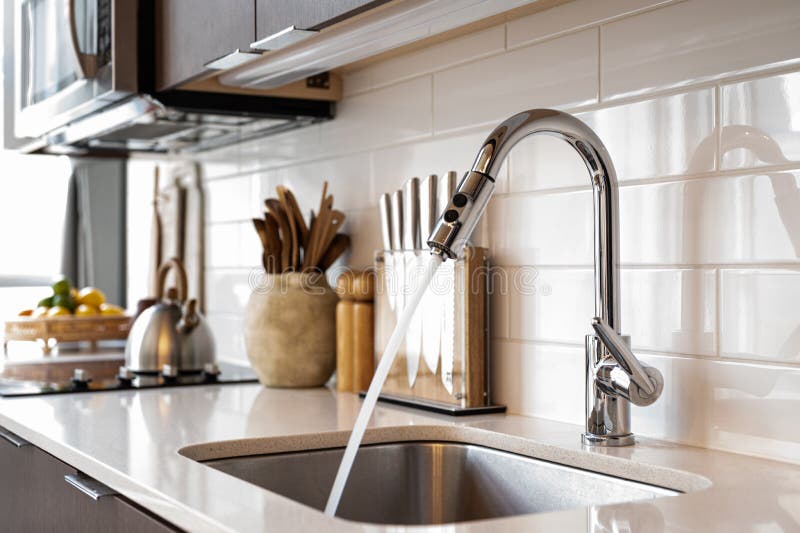 In conclusion,
low water pressure in the kitchen sink
can be a frustrating and inconvenient issue for homeowners. It can be caused by a variety of factors and can greatly impact daily activities. However, by understanding the possible causes and taking preventative measures, this issue can be easily solved and prevented in the future.
Regular maintenance is key to keeping your kitchen sink functioning properly and ensuring a consistent water flow.
In conclusion,
low water pressure in the kitchen sink
can be a frustrating and inconvenient issue for homeowners. It can be caused by a variety of factors and can greatly impact daily activities. However, by understanding the possible causes and taking preventative measures, this issue can be easily solved and prevented in the future.
Regular maintenance is key to keeping your kitchen sink functioning properly and ensuring a consistent water flow.
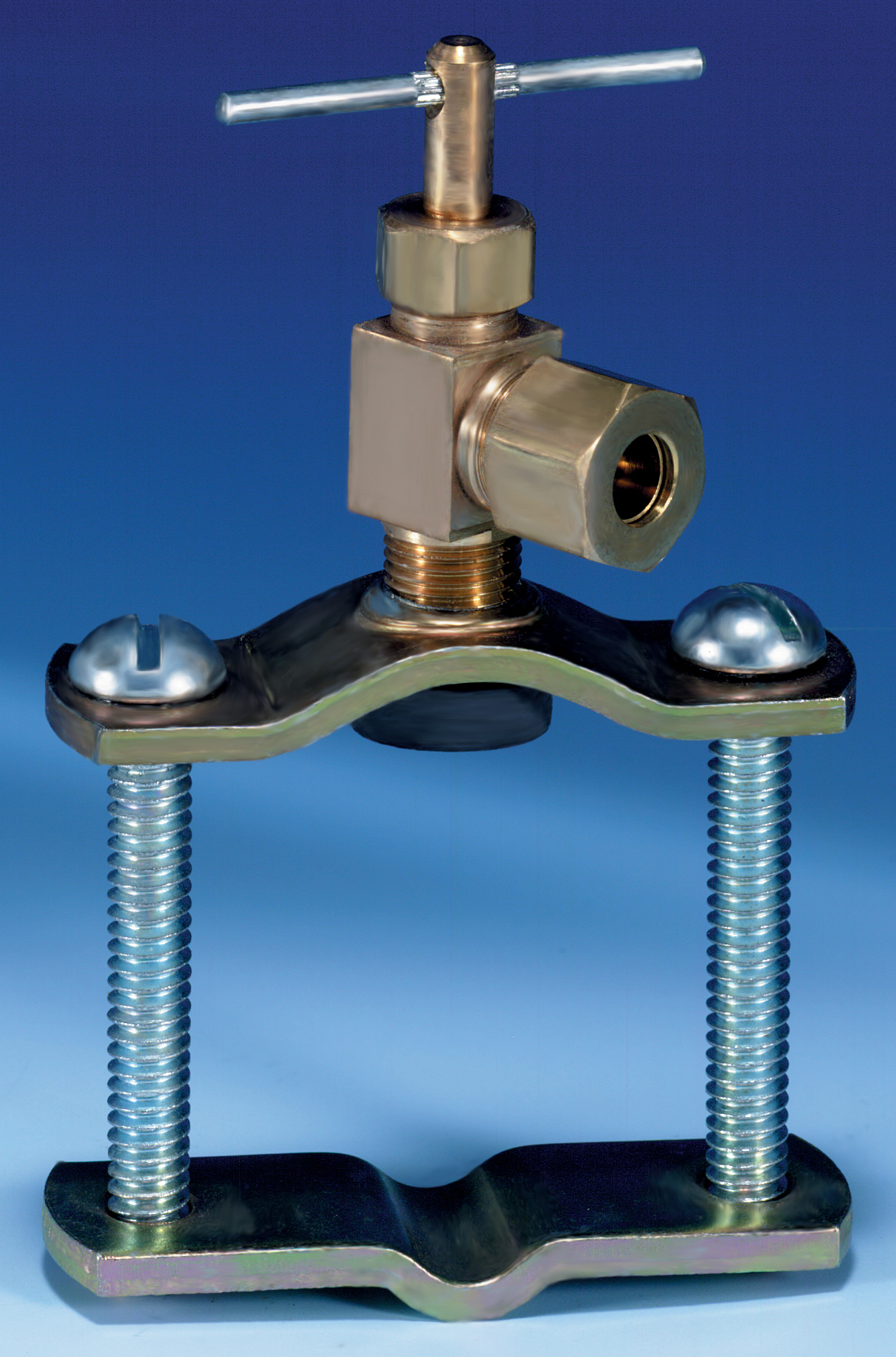





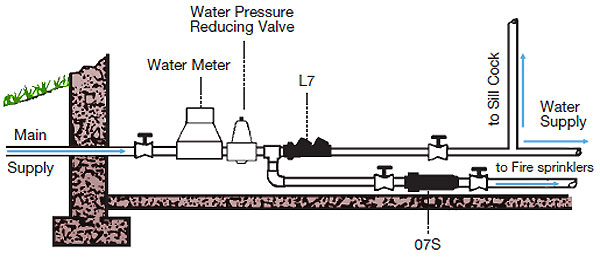
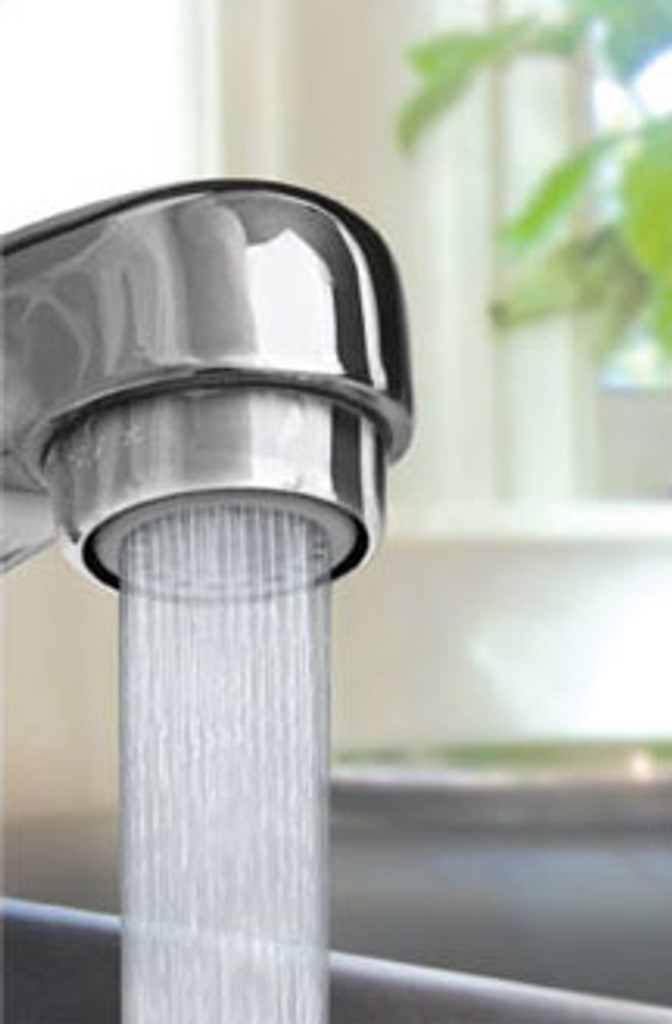
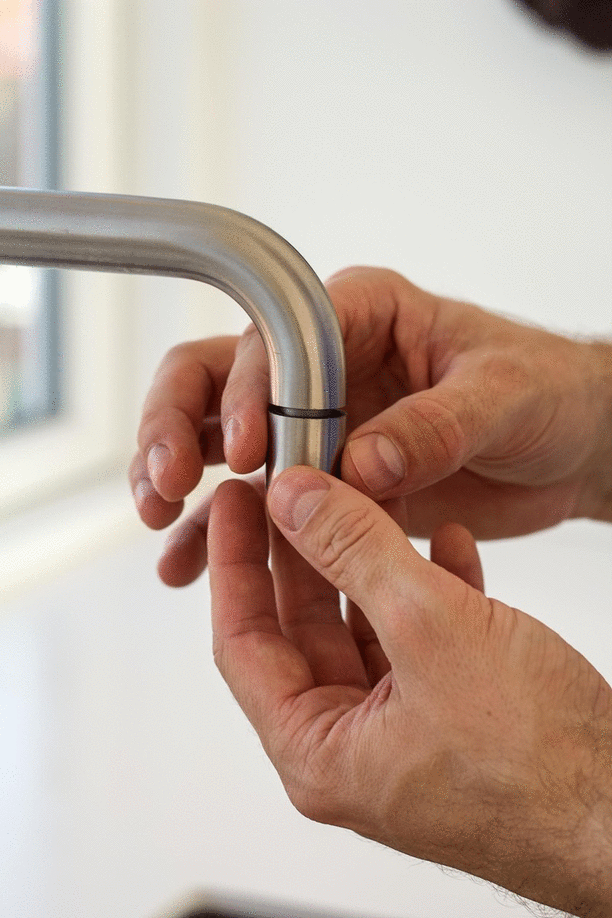



/fixing-a-tap-459986221-5afc675431283400371f7872.jpg)
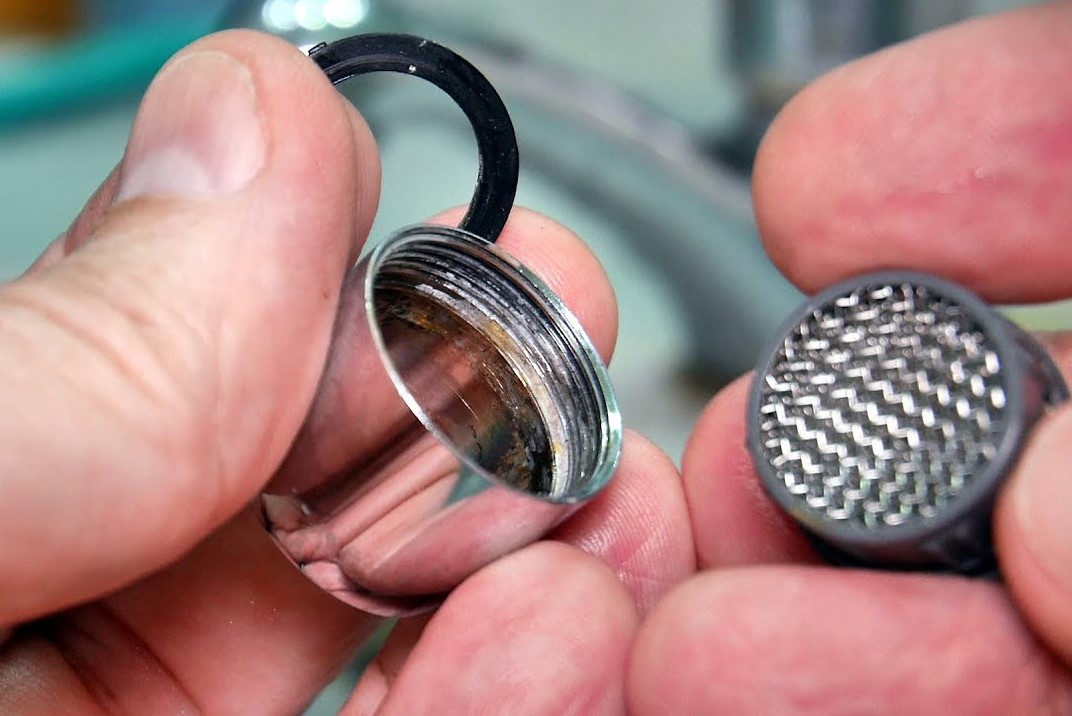
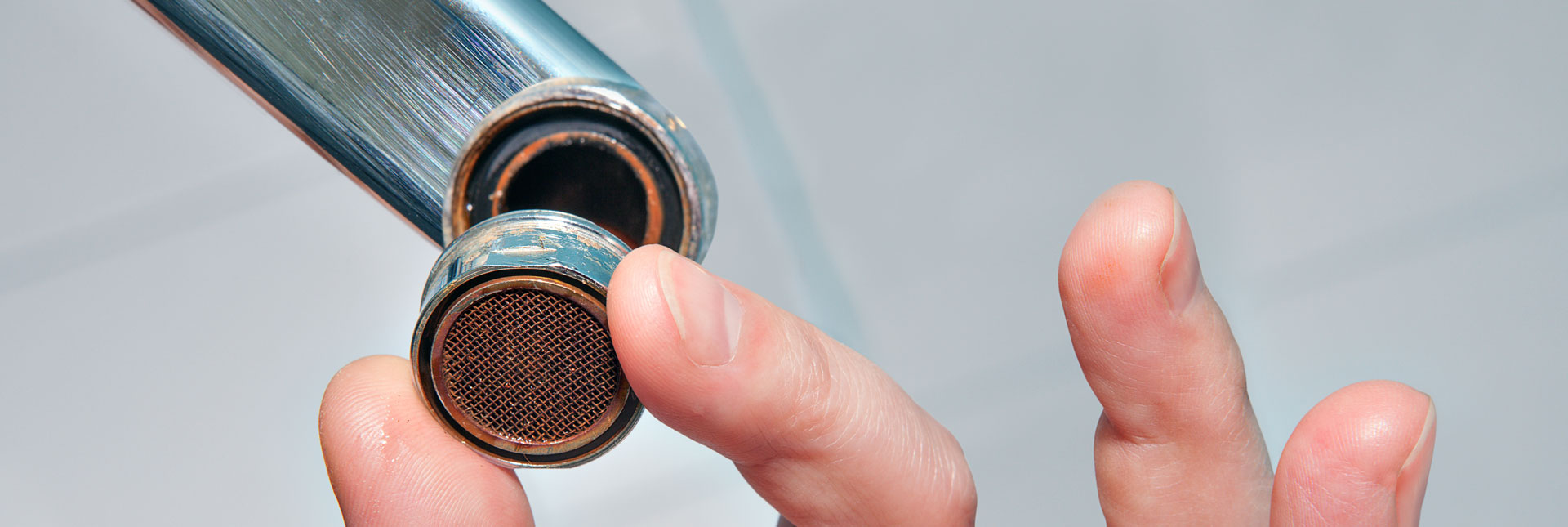

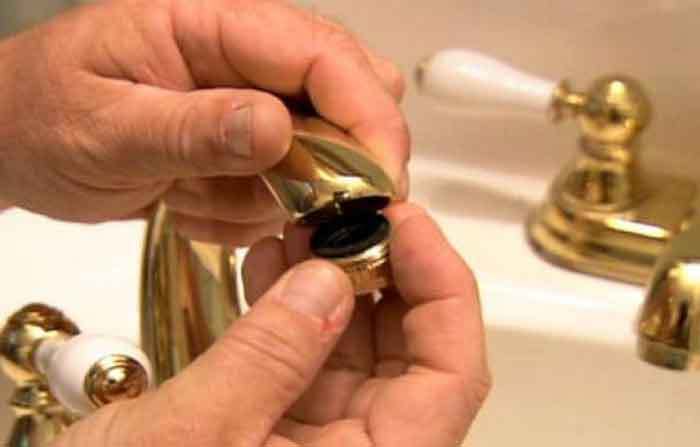
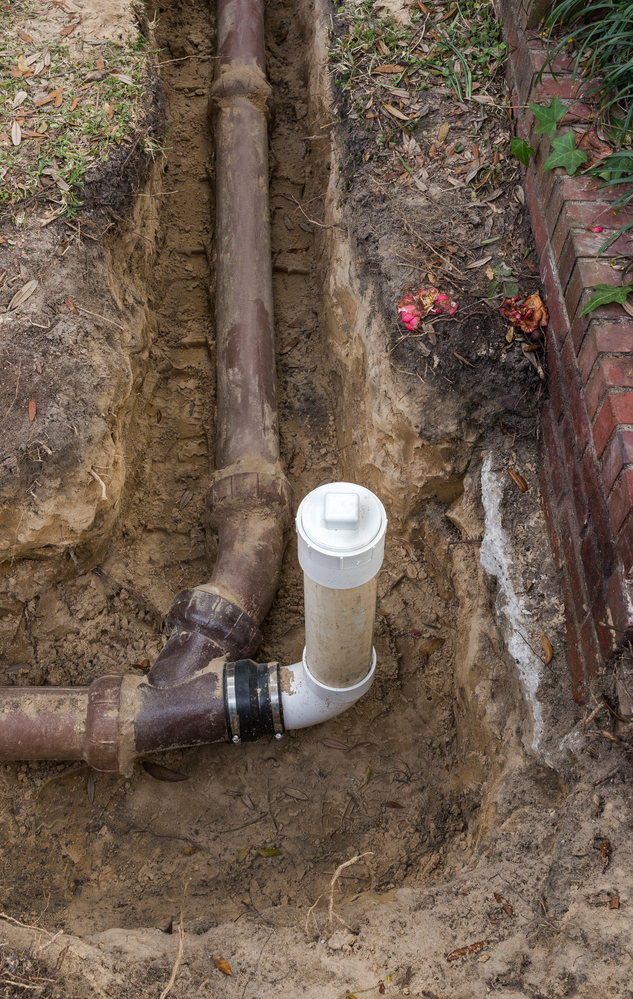



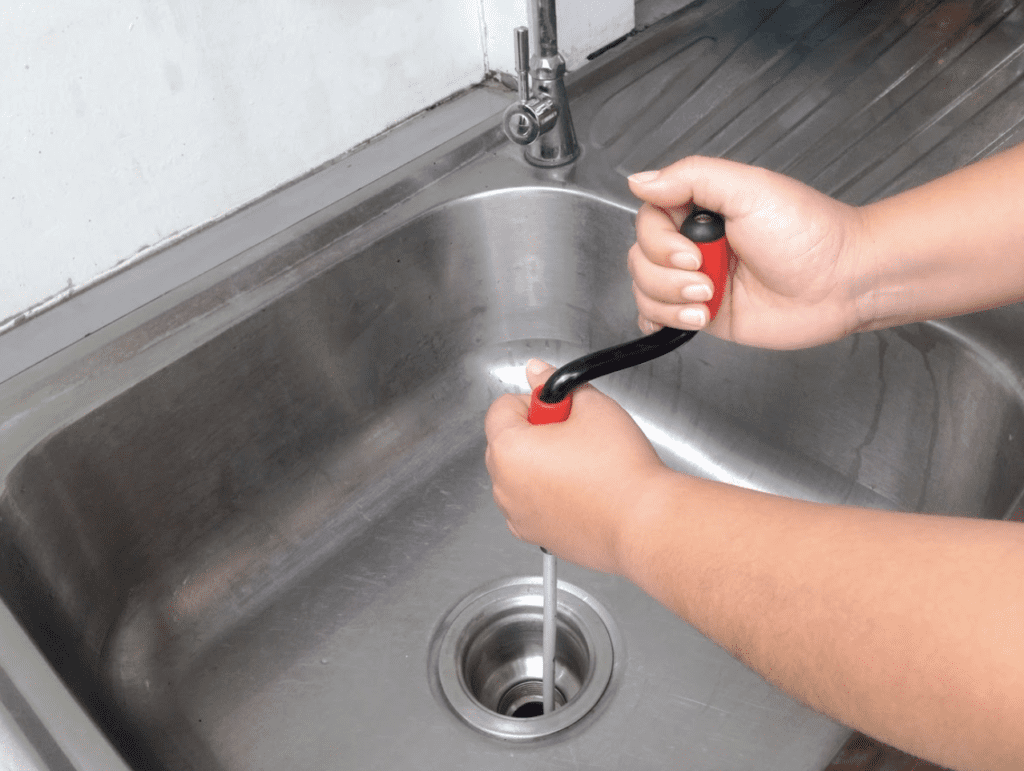


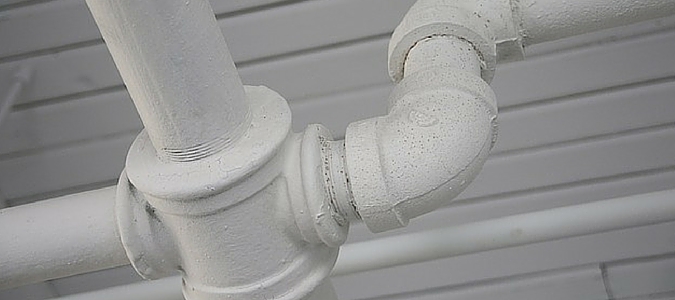




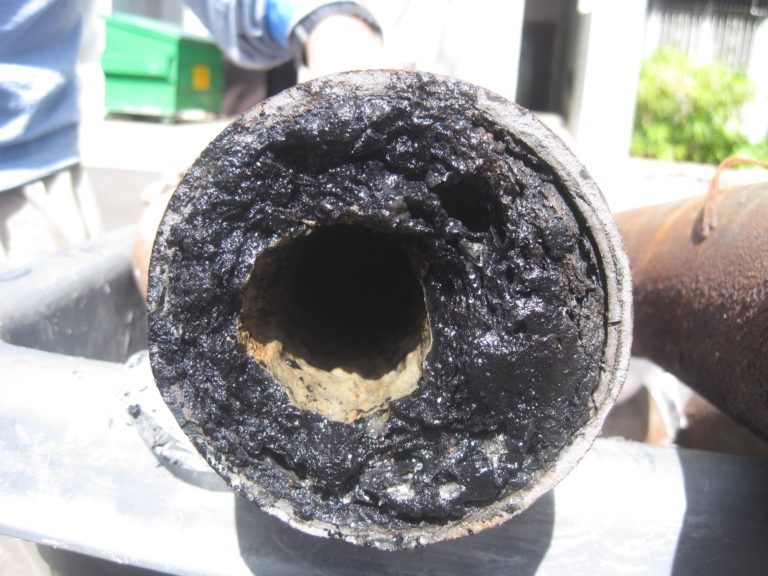




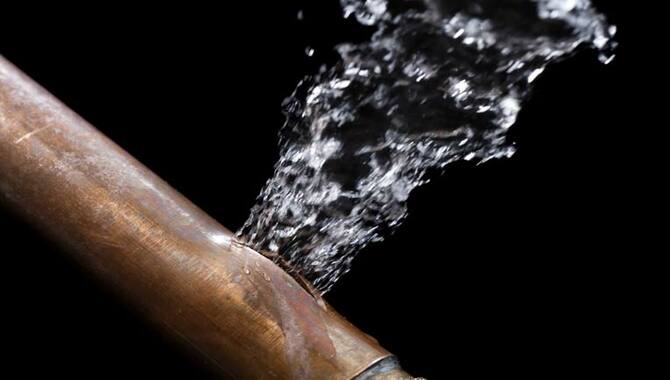
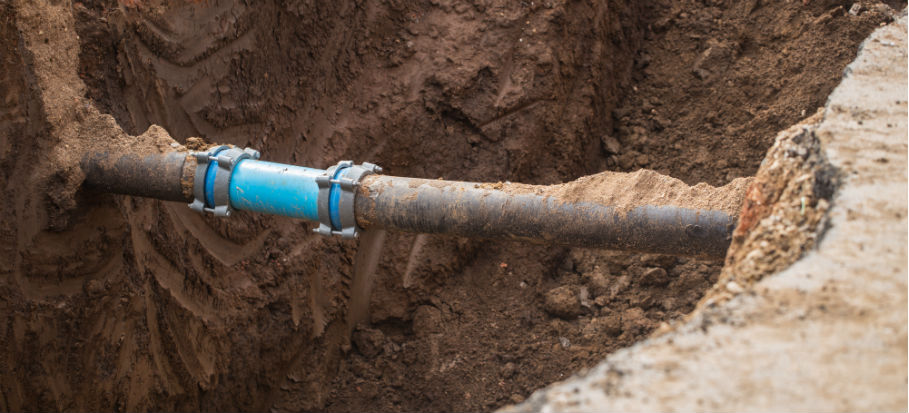


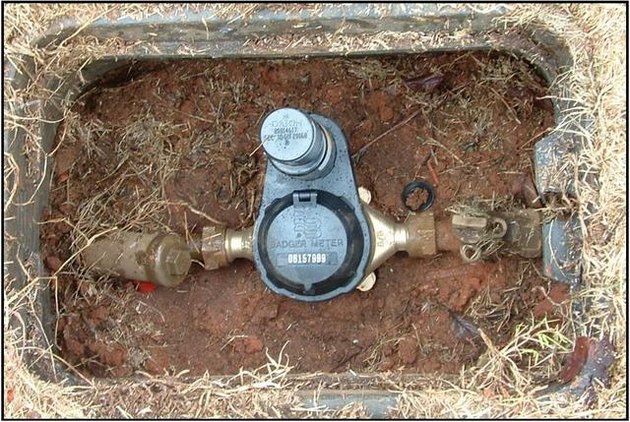


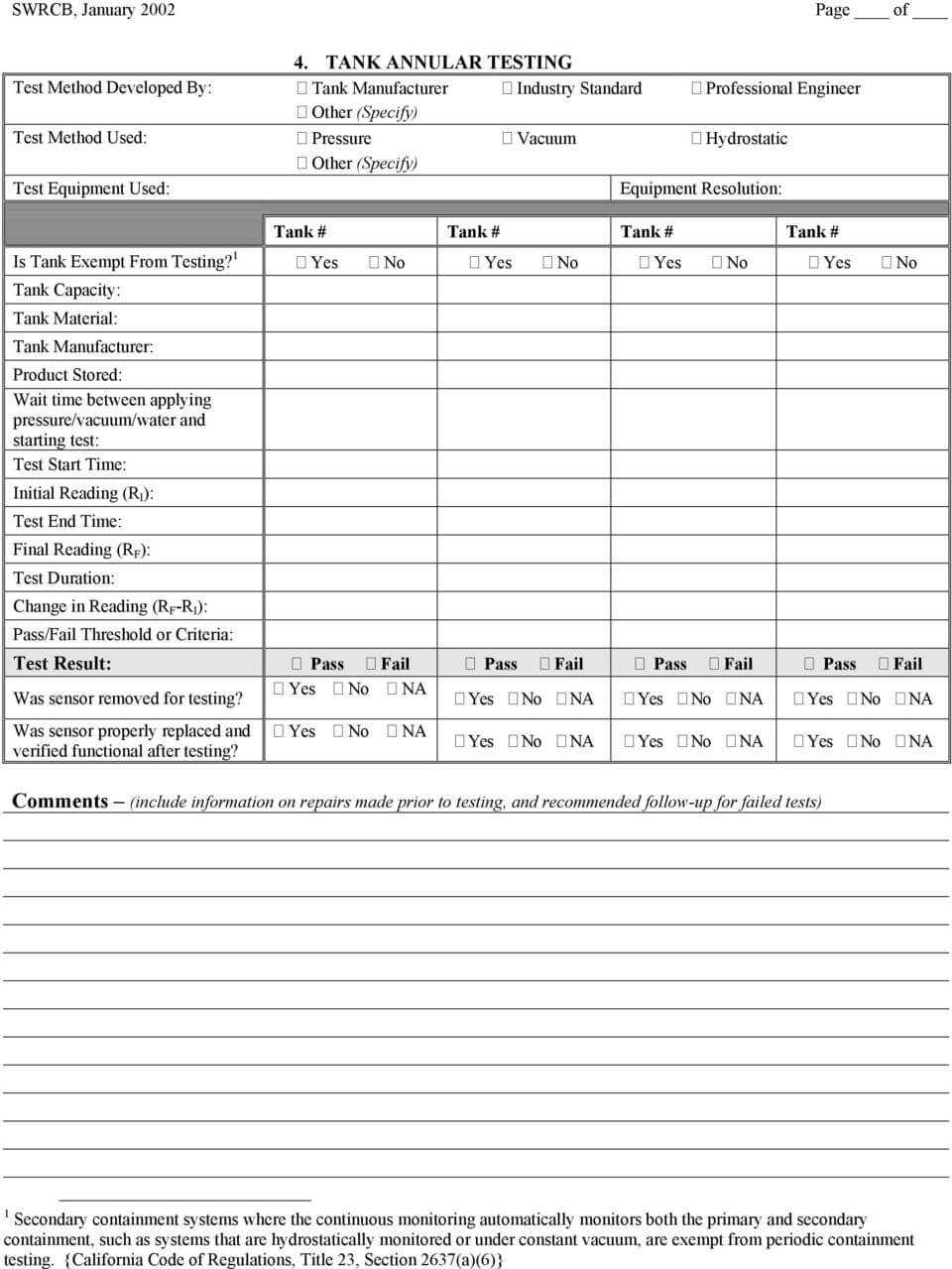
/93097679-56a73c295f9b58b7d0e81657.jpg)
/testing-water-pressure-in-your-home-2718692-hero-98f45508ca5d44b6b551034ac5cedab5.jpg)
:max_bytes(150000):strip_icc()/testing-water-pressure-in-your-home-2718692-04-c37ab3236d0d4b61b87079ebf9ef823e-c1e1ef0104fb44778a287bd9bb5ec140.jpeg)

:max_bytes(150000):strip_icc()/the-men-s-hand-opens-the-ball-valve-on-the-collector-1006810456-5c5fc73fc9e77c000159c4af.jpg)

